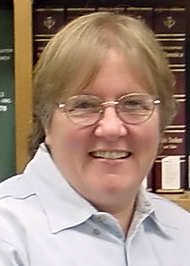Virginia H. Huxley, PhD
Research Interests
Microcirculation, especially transvascular water and solute transport
Research Description
Huxley's laboratory's major objective is to understand solute, water and gas transfer between circulating blood and metabolizing tissue. Knowledge of the barriers to transport in live tissue is required to clarify the processes underlying the development of dysfunctional states such as edema or shock. With that knowledge, strategies can be designed to treat pathologies with the goals of first, abating; second, arresting; and third, reversing the disease process. Transport occurs by "passive" and "active" mechanisms. While passive mechanisms have been studied extensively, little has been done to characterize cellularly-mediated, active processes.
Huxley studies both areas. Passive processes involve physical forces, such as blood or osmotic pressure, at the sites where materials move between blood and tissue. Our research has shown that plasma proteins, other than albumin, confer the solute selectivity of microvessels. Active processes, involving cellular restructuring at the vessel wall, result in alteration of barrier function.
Huxley hypothesized that capillary barrier structure is 1) dynamic and 2) variable between vessel to vessel, reflecting both organ function and position within a network of interconnected vessels. Collaborative studies at Dalton are underway to determine how interstitium stores and mobilizes water under conditions of bleeding or dehydration.
Further, central to the research effort are studies along with several members of Dalton Cardiovascular Research Center on cardiovascular adaptation to exercise. In this case, focused on alterations in the microvascular barrier to transport.
The research team also designs, implements and verifies techniques to study transport in intact tissue at the microscopic level. Methods to extend these quantitative studies to mammalian skeletal, cardiac, and brain arterioles and venules have been developed. The global intent is to contribute to the experimental and theoretical description of transport through pathways of microscopic geometry, investigate the relationship between blood supply and metabolic demand as occurs during exercise and design strategies for the treatment of states of volume imbalance.
Professional Background
- Obtained AB in chemistry and computer science, Hollins College.
- Obtained PhD in biophysics, University of Virginia.
- Completed postdoctoral studies, University of California, Davis.
- Elected member of several national societies including Biophysical Society, American Physiological Society, Microcirculatory Society and Society of Biomedical Engineering.
- Serves as a reviewer for national and international journals and the National Institutes of Health (NIH).
- Serves on the editorial boards of the American Journal of Physiology, Microvascular Research, and Microcirculation.
- Established Investigator of the American Heart Association (1987-92).
- Selected as Merit Awardee of the NIH.
Selected Publications
- Huxley VH, Scallan J., Lymphatic fluid: exchange mechanisms and regulation., J Physiol. 2011 Jun 15;589(Pt 12):2935-43. Epub 2011 Apr 26.PMID: 21521763
- Scallan J, Huxley VH, Korthuis RJ., Capillary Fluid Exchange: Regulation, Functions, and Pathology., San Rafael (CA): Morgan & Claypool Life Sciences; 2010.PMID: 21452435
- Huxley VH, Wang J., Cardiovascular sex differences influencing microvascular exchange.,Cardiovasc Res. 2010 Jul 15;87(2):230-42. Epub 2010 May 21. Review.PMID: 20495187
- Wang J, Bingaman S, Huxley VH., Intrinsic sex-specific differences in microvascular endothelial cell phosphodiesterases., Am J Physiol Heart Circ Physiol. 2010 Apr;298(4):H1146-54. Epub 2010 Feb 5.,PMID: 20139324
- Scallan JP, Huxley VH., In vivo determination of collecting lymphatic vessel permeability to albumin: a role for lymphatics in exchange., J Physiol. 2010 Jan 1;588(Pt 1):243-54. Epub 2009 Nov 16., PMID: 19917564
- Glinsky VV, Kiriakova G, Glinskii OV, Mossine VV, Mawhinney TP, Turk JR, Glinskii AB, Huxley VH, Price JE, Glinsky GV., Synthetic galectin-3 inhibitor increases metastatic cancer cell sensitivity to taxol-induced apoptosis in vitro and in vivo., Neoplasia. 2009 Sep;11(9):901-9., PMID: 19724684
- Bunyak F, Palaniappan K, Glinskii O, Glinskii V, Glinsky V, Huxley V., Epifluorescence-based quantitative microvasculature remodeling using geodesic level-sets and shape-based evolution., Conf Proc IEEE Eng Med Biol Soc. 2008;2008:3134-7., PMID: 19163371




